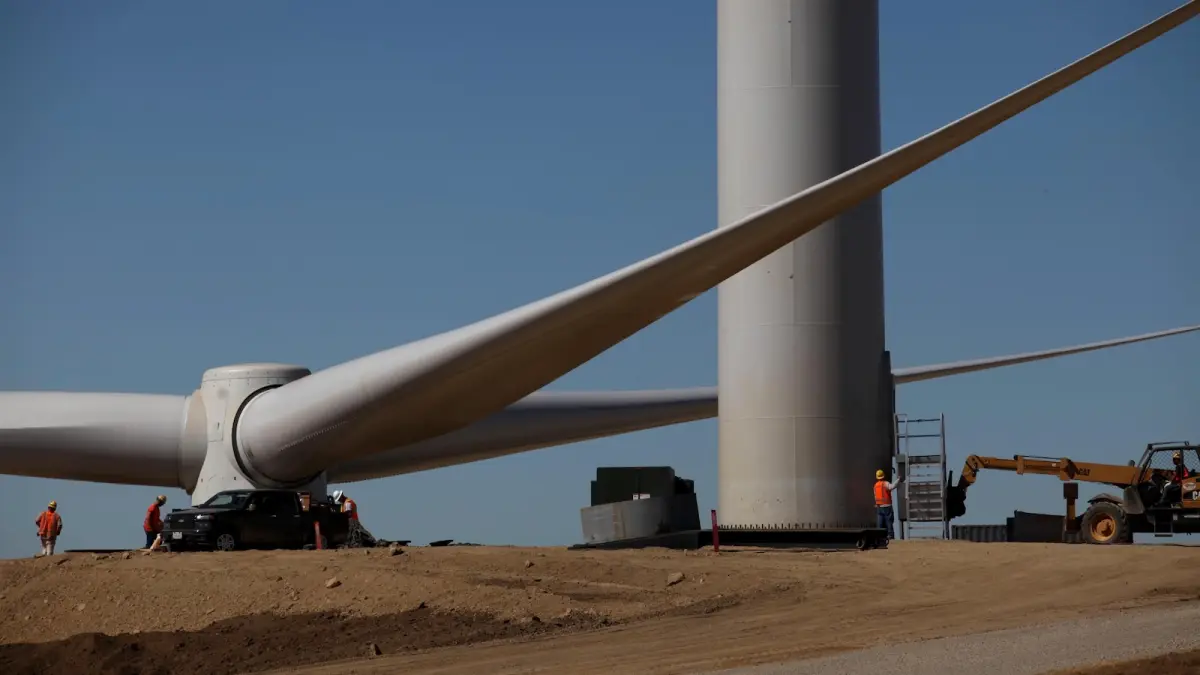
When you live far from the sprawling fields befitting utility-scale solar and wind farms, it’s easy to feel like clean energy isn’t coming online fast enough. But renewables have grown at a staggering rate since 2014 and now account for 22 percent of the nation’s electricity. Solar alone has grown an impressive eightfold in 10 years.
The sun and the wind have been the country’s fastest growing sources of energy over the past decade, according to a report released by the nonprofit Climate Central on Wednesday. Meanwhile, coal power has declined sharply, and the use of methane to generate electricity has all but leveled off. With the Inflation Reduction Act poised to kick that growth curve higher with expanded tax credits for manufacturing and installing photovoltaic panels and wind turbines, the most optimistic projections suggest that the country is getting ever closer to achieving its 2030 and 2035 clean energy goals.
“I think the rate at which renewables have been able to grow is just something that most people don’t recognize,” said Amanda Levin, director of policy analysis at the National Resources Defense Council, who was not involved in preparing the report.
In the decade analyzed by Climate Central, solar went from generating less than half a percent of the nation’s electricity to producing nearly 4 percent. In that same period, wind grew from 4 percent to roughly 10. Once hydropower, geothermal, and biomass are accounted for, nearly a quarter of the nation’s grid was powered by renewable electricity in 2023, with the share only expected to rise thanks to the continued surge in solar.
The vast majority of the nation’s solar capacity comes from utility-scale installations with at least one megawatt of capacity (enough to power over a hundred homes, according to the Solar Energy Industries Association). But panels installed on rooftops, parking lots, and other comparatively small sites contributed a combined 48,000 megawatts across the country.
“One thing that surprised a lot of different people who’ve read the report in our office was the strength of small-scale solar,” said Jen Brady, the lead analyst on the Climate Central report.
With residential and other small arrays accounting for 34 percent of the nation’s available capacity, “it lets you know that maybe you could do something in your community, in your home that can help contribute to it,” Brady said.
Still, the buildout of utility-scale solar farms continues to set the pace for how rapidly renewable energy can feed the country’s grid. According to Sam Ricketts, a clean energy consultant and former climate policy advisor to Washington Governor Jay Inslee, solar’s growth was driven by production and investment tax credits that President Barack Obama extended in 2015 and President Joe Biden expanded through the Inflation Reduction Act, or IRA. Beyond these federal incentives that allow energy developers to claim tax credits equivalent to 30 percent of the installation cost of renewables, state policies that proactively drive clean energy or promote a competitive market in which the dwindling price of renewables allow them to outshine fossil fuels have been critical to ratcheting up growth. Yet, even with the accelerating expansion seen in the last decade, more investments and incentives are needed.
“As rapid as that growth has been, how do we make it all go that much faster?” Ricketts asked. “Because we need to be building renewables and electricity at about three times the speed that we have been over the last few years.”
Achieving that rate of buildout is critical for achieving two of President Biden’s climate goals: cutting emissions economy-wide by at least half by 2030 and achieving 100 percent carbon-free electricity by 2035.
To realize those goals, the nation must reach 80 percent clean energy by 2030. “I dare say it’s even more important, for the time being, than 100 percent clean by 2035,” Ricketts said. Hitting that benchmark, he said, will require more federal and state policy pushes. Levin agrees.
“The IRA does a lot,” she said, “but it is not likely to do everything.”
The IRA has the ability to push renewable energy from roughly 40 percent of the nation’s energy mix, when nuclear is included, to more than 60 percent — or, in the most optimistic of scenarios, 77 percent.
But for the growth in capacity to be integrated into the system and utilized, the grid needs to be able to transmit electrons from far-off solar fields and wind farms to the places where they’re needed. While the transmission conversation most often revolves around building new lines and transmission towers, Levin notes that recent technology advances have made it possible to address half of these transmission needs simply by stringing new, advanced power lines on existing infrastructure that can handle bigger loads with fewer losses, in a process called “reconductoring.”
The other challenge that comes with building out clean energy is learning how to handle the way wind speeds and sunshine fluctuate. While this is often levied as an argument against their reliability, Levin points out that a host of solutions exist — from expanding battery storage to adjusting loads when demand spikes — to ensure they’re reliable. The challenge is adopting them.
“Utilities are risk averse,” she said, “and their commissions can also be risk averse. And so it’s getting them to be comfortable with thinking about the way that they provide electricity and the way that they manage their system a little differently.”
